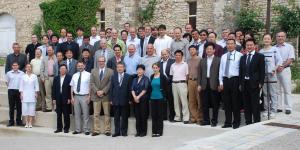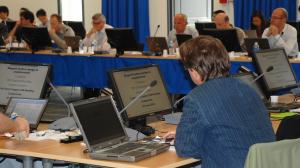Design for coil power supplies under review
11 Jun 2010
-
Charles Neumeyer, Design Review Chairman, Princeton Plasma Physics Lab
The 21-person review panel included members from the ITER Organization, the Domestic Agencies, other fusion and accelerator labs worldwide, and industry.
The conceptual design review for the coil power supply system was successfully conducted this week. The review panel was made up of 21 persons including members from the ITER Organization, the Domestic Agencies, other fusion and accelerator labs worldwide, and industry.
The purpose of the coil power supply system is to supply all electrical power to the ITER magnets and heating and current drive systems. In addition it must discharge the stored energy in the ITER magnets in case of quench—and this is quite a challenge, as the energy stored in the toroidal field coils, for example, at the maximum (68 kA) current is about 41 GJ.
The system will be the largest ever built, far exceeding prior installations at TFTR, JET, and JT-60 in terms of power and energy. In-kind contributions are made by China and Korea for the AC/DC converters, the reactive power compensation and the AC distribution. The Russian Domestic Agency supplies the switching networks and the fast discharge units.
While many chits were generated, the general opinion of the review committee was that the conceptual design has been well established and that the next phase of the work, the preparation of Procurement Arrangements, can proceed.



